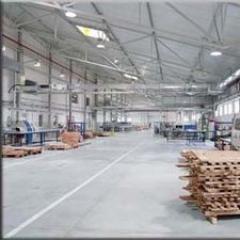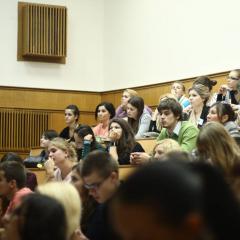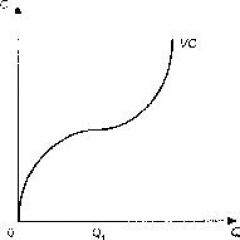When turning, the kerma clicks.
Doglyad
Golovna
Many drivers often encounter such a problem that when turning the kerma there is a slight clicking or knocking sound. This situation can be the same for old cars as for new ones, but it can be extended. Significantly, this clatter can be any kind of water, without going wild until the maysts of the STO.
This allows you to save time and money.
If a car owner has little experience in repairs, then he himself can fix the problem, spending only on new spare parts.
If the kermo clicks when turning, and this sound is felt during the skin maneuver, then you first need to determine the nature of the sound.
The sound is clear and ringing, indicating the presence of metal hitting metal.
If the sound is less clear, muffled, it is more like metal and plastic.
This reason can be determined by additionally designing the kerma traction, for example, installation.

If knocking and play appear in this situation, the tip must be replaced.
In addition, it is recommended to replace two tips at a time, as splinters at either tip will cause slight play over time.
If you replace one (install without play) or remove the old one (with play), then the machine will run unevenly, and there will also be noticeable noise and knocking.
In addition, you can gradually get confused.
Checking the vehicle suspension
The clattering noise may be caused by static silent blocks of the cermatic rods.
Wearing the silent blocks and loosening the gum may cause a clattering sound when turning the kerma in place and during rotation.
If this is the reason for the knock, then the silent blocks must be replaced. The kermo clicks when turning - turning the steering wheel ends and steering rods over When the rack bushings are worn, a knocking sound may also appear in the kerma.
There is a small gap between the rack and gear.

Sometimes you can put a gap behind the adjusting bolt.
The reasons for the clatter of Kermi, like Bachimo, may be rich.
Suspicious symptoms may include the hum of wheels, tapping, clinking, cracking, etc.
In addition, you must always keep an eye on the behavior of the car itself.
In case of any other damage, the car will not drive like it used to before.
If the tip or bushing breaks, the car can collapse at any time.
If the CV joint malfunctions, everything will clatter over time to the point of unbearably creaking.
The car will always show you what is wrong with itself. Why is the clattering at the kermi careless? The sound of these clatterings clearly indicates that the situation is unsafe. For example, if there is a clattering sound when turning the car with the turn signal turned up, then it is not good to clatter. The turn signal just shows the sound of the kermo beating.
And if the CV joint, the main bearing or the strut support are broken, it is not possible to repair the car; the continued use of such a car will lead to a complete breakdown, which may lead to an accident in the road.
Ways to remove the clack from kermi
- As has already been said above, all malfunctions associated with clattering at the kerma can lead to emergency water.
- Please identify the malfunction and replace the broken part or rebuild it.
- There’s nothing fancy here.
- Kermo is one of the most important parts of a car.
Before starting a visual inspection, it is necessary to include the following points:
- checking the mounting of the anti-roll bar;
- control of the support cushions of risers;
- control of fastening of suspension elements;
- checking the silent blocks, fastening the rods, stretching, etc.;
- control of the buffer during the process of compression (for ruination), building generation knock;
- Check the wear stage of the hinge of the suspension system, connect the lower part.
The next step is to install the drill, which generates a sensitive knock when turning the kerma, to control the springs.
As a result of “settling”, deformation or breakage of the spiral turns, a noticeably dull knock appears.

Another reason for a knock in the area of the front suspension of a vehicle could be deformation or insufficient fastening of the plastic guard on the wheel arch of the car.
When the steering wheel is turned, the fragments that are not secured come into contact with the CV joint file and create sounds similar to a knock.
For all its insignificance, this defect requires operative removal, although it is likely that it will become the cause of other, more serious defects. For example, fastening the guard of the arch directly to the “spike” of the bumper makes it possible for the bumper to damage when the guard is deformed. The presence of a characteristic knock that “gurgles” when the steering wheel is turned indicates that the permissible level of wear of the steering rod ends has been exceeded.

Failure to make regular visits to replace worn steering tips threatens the Lanczug reaction with the loss of usefulness of the elements of the steering mechanism, which to the worst attack
If there is an accident, the short term will have significant financial losses. Respect! After replacing the steering tie rod ends, the wheel alignment adjustment must be adjusted.
The combination of knocking and humming, which immediately occurs when turning the steering wheel to the right (left), signals the loss of serviceability of the bearing of the engine of one of the front wheels of the transport unit.
Note that both bearings come out of tune at the same time - this is not a rare occurrence.
The axis is truly serious.
The complexity of the repair work stems from the need to “press” the worn bearing out of its seat on the machine. This diagnosis is conveyed not only to the trival, but also to the end of the road “rejoicing”, and unexpectedly, the previous visits will end, as a rule, in the new damaged elements of the front suspension of the vehicle. Video - What to do when it makes a slight knock when turning
And, let’s face it, the reason that is heard by most cars is the deterioration of the joint of equal parts, or the CV joint. The wear of the element itself produces a sound more similar to a “crack”, and from the distortion of the CV joint saw blade, as a result, the joint itself “generates” sounds that are often mistaken for a knock. The greatest
1 effective method
Prevention of this defect involves regular (at least once a month) inspection of the saw blades and careful replacement whenever ruptures are detected.
This is a good idea to save you not just an hour, but a few pennies.
Third-party sounds in the steering system may indicate a malfunction. Moreover, the type of breakdown often depends on the nature of the sound. In general, it is possible that the details of the hydraulic power plant will go out of order.
In this case, it is necessary to immediately go to the service center, since the repair of this unit is difficult, which will require complete knowledge.
2 Often, vehicle owners with power steering experience a whistling noise from the kerma system.
At the beginning the pressure is not strong, and only a little occurs when the kerma is turned all the way. Sometimes the whistle becomes louder and appears at any kerma position, especially if the car is not warmed up. The cause of the whistling is the power steering pump drive belt.
- To stop the whistling, the belt needs to be replaced or simply adjusted for tension.
- Often the power steering whistle appears about an hour after replacing the belt.
- Therefore, make sure to keep the tension tight until the belt does not break in.
- It must be said that the whistling of the belt can be confused with the whistling of the wheel bearings.
If the whistle starts, when the car starts to lurch, it means the bearings are whistling. Creaking when wrapping the kerma wheel - what is the reason? The reasons why the kermo squeaks when wrapped, may be a splint.

Most often it is the fault
3 What knocks and crunches when turning - the shock absorber?
The reasons why knocking can occur is also a knock.
Some of them are “innocent”, while others require difficult car repairs. The sound of the cul-de-sac support can be heard before the rest. True, this element is not connected to the kerma system, but to the front suspension, but since the joints are interconnected, we will look at it in the same way. The knocks of the rocker are noticeably more noticeable on small hills and when driving on gravel road surfaces. In Russian cars

smooth road
The kulova is forced to creak, or even tap, as its body is completely vulnerable. To avoid a malfunction of the cul-finger, you can inject the ointment with the help of a syringe into the cul-finger, piercing the nail humic saw grass
.
If there is a slight knock at the rear, or when the car enters a turn, it may be due to shock absorber wear.
In this case, the stronger the pressure on the wheel when turning, the stronger the knock. Since the shock absorbers of the left and right wheels rarely go out of tune at the same time, the clatter is a little less when turning in one direction. The axis and all the main causes of noise in the kerma system. If you have not been able to accurately determine the cause of the noise, you should immediately diagnose the car in service center
. Adje steering control
- This is one of the most reliable systems that guarantee security!

Car enthusiasts often clack, why do they hear the clatter when turning the car in Russia.
This is a broader problem.
Moreover, there is a price for cars with kerma bars.
Most people simply don’t show respect for this problem.
What should we do in a lot of situations?
Most often there is an increase in kerma play.This occurs when the hinges are worn out or the sealing of the worm mechanism is damaged.
For diagnostics, it is necessary to drive the car onto an inspection hole or overpass. Therefore, one person constantly turns the kermo, and another marvels at the ease of work of obtaining parts. Sometimes you can detect play by simply pushing the rail with your hands. In a normal situation, the structural elements move at the same time. The play will be noticeable immediately.

You can often hear a loud knock when driving through small crossings.
- The problem is with the cul-de-sac supports.
- If you don’t respond to the problem, kerma backlash will inevitably appear.
- Therefore, at the first knock, your boss should look at the joint and carry out diagnostics to determine if there is any play.
a common problem
є tight turn of the kerma.
Sometimes you can be careful winter hour
- .
- This situation is explained by the presence of oil in the steering column gearbox.
- Know this sign to pass after a few kilometers.
- biting the steering rack rod
- radial play in the steering column shaft
- contact with debris and corrosion of the lower culm support
- malfunction of the wheel drive
- damage to the integrity of the spring
If there is a slight clicking sound when the seal is wrapped, which can also be felt on the steering wheel, you should check the position of the steering drive elements.
The revealed wear of the crossbars is carried out by matting the cardan joint when turning the kerma to the right and left to a small angle.
You can clearly feel the touch with your hand and allow you to easily remove the worn part.
In this case, it is necessary to ensure that such parts and activities may be in critically accessible places.
For a number of faults, it may be necessary to dismantle assemblies for analysis and inspection of components with immediate replacement of the faulty part.
Backlash at spline joints
The play in the spline joints of the rack drive shaft is of a similar nature.
Biting the kerma when wrapped will indicate that the rod has been damaged by corrosion as a result of moisture being deposited in the middle of the body.
The pressure appears when you turn the kerma onto the first layer of wraps.
When a rusty section of the rod passes through a straight plastic bushing, severe rubbing occurs, the fragments of the surface of the rod are no longer mirror-smooth, but rather rusty.
This is accompanied by a characteristic creaking and clattering noise when turning the kerma.
Required analysis of the assembly and inspection for parts damaged by corrosion with their subsequent replacement.
In advanced cases, it is necessary to replace the entire rack. Steering column shaft play Clattering in the steering column often appears in Russian cars and indicates the presence of radial play in the shaft as a result of bearing wear.
It is easy to diagnose the backlash - just reach the shaft with your hand and try to grab it from the wrapping axis.

In case of confirmed malfunction, repair of the steering column is possible on some cars, but on other models it is not necessary to replace it immediately.
The malfunction is not critical and, apart from the unpleasant noise, the noise of other items cannot be caused at any time.
Corrosion of the lower culm support



